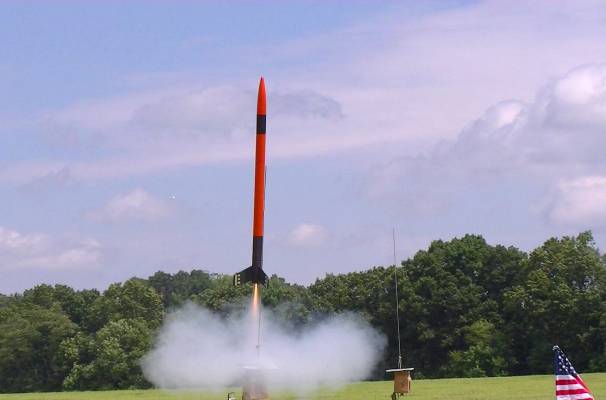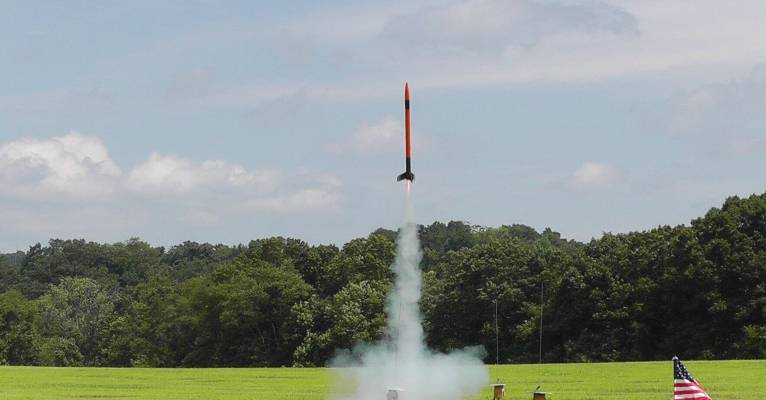The Renegade: It is a very old model built in the 1970s by my brother. The Renegade is a classic '70s kit. Not at all like the modern Renegade; this is your father's Renegade. This is a large, tall, D-powered model, finished in the original catalog paint scheme. Build credits for this kit actually go to my brother. I modified it by adding my usual altimeter payload bay ("Iris"). This adds 4-1/2 inches to the rocket's length and 17 grams of nose-weight. I also replaced the Estes plastic parachute with a better nylon cloth parachute, and use a Nomex cloth instead of wadding. After an Iris test flight with a D12-5, I’m going to load this baby up with a Aerotech E20-7W engine and push the boundaries of rocket power (for me, anyways). This model reaches about 500' on a D12-5, but on an E20, I would expect at least 1000'. (Iris is named after the Greek god of the rainbow. She is a messenger of the gods, linking the gods with humanity.) This rocket has flown higher than William Penn on top of the Philadelphia City Hall building, NASA's VAB building at Cape Kennedy, or the Cologne Cathedral in Germany.
| Flight Date: | 2012-08-11 |
| Rocket Name: | Renegade |
| Kit Name: | Estes - Renegade {Kit} (1271) [1975-1980] |
| Flyer's Name: | Rich DeAngelis |
| Motors: | D12-5 |
| Expected Altitude: | 500 Feet |
| Wind Speed: | 8.00 mph |
| Launch Site: | Halifax, PA |
| Actual Altitude: | 493 Feet |
The D12 lit and burned for its usual time of 1.9 seconds, accelerating this big rocket to 11.3 Gs off the rod and averaging 2.6 Gs throughout the burn. It reached a speed of 107 mph and coasted upwards for 4.4 seconds before the ejection fired at 458 feet. The nosecone popped and it continued up for another 7/10 seconds to an apogee of 493 feet. It then arched over into the wind and started descending, with the parachute out in the wind but still packed.
I had packed the Nylon parachute tightly, wrapped it in its Nomex blanket and then wrapped a layer of wadding around that to keep it clean. I was also attempting to get the parachute to deploy slowly – sort of like a dual-deploy in these rather strong winds. Of course as the rocket began to fall very fast I started to have second thoughts. I heard others claim “no parachute!” I was a bit worried but smiled confidently anyway. After maybe three seconds, the parachute shed its wadding then the Nomex and opened to show its bright yellow color in the sun, possibly about 100 feet lower than when it opened. Although it came down slowly and safely, the altimeter recorded a high average speed of 17 mph for the descent, but with the chute opened it was more like half that speed. The rocket landed about 300 feet upwind after 24 seconds for a perfect flight.
| Stage | Motor(s) |
|---|---|
| 1 | Estes D12-5 |
 |
 |

